Home
KASHBA Asiatica
Ais Loupatty
Ton Lankreijer
Staalstraat 6
1011 JL Amsterdam
Open 12:00 – 17:00
Zondag / Sunday 14:00 - 17:00
Contact:
31-20 - 6 23 55 64
06 - 588 41 370

As a sixth-generation temple guardian, he relies on the daily offerings for his livelihood. The family home is adjacent, and through an open door I can see the television on.
His son will not be taking over the business, however, he tells me, because "he is studying". Maybe his brother's son will, because "he has fewer opportunities”.

Tekst invoeren
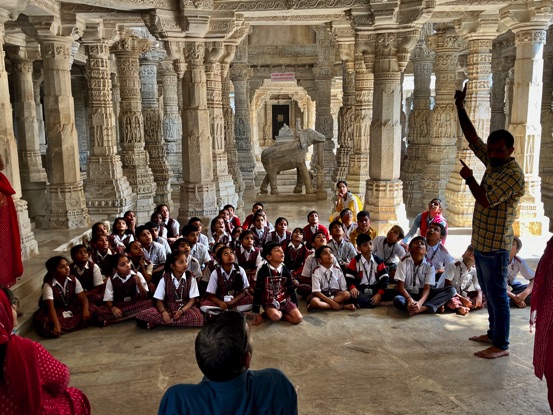
‘The difference between buddhism and jainism is...’ he says like a teacher standing in front of yet another class, ‘...that buddhists close their eyes... and we jains... we keep them wide open.’
Tekst invoeren
Jainism believes in a fundamentally good soul, but this must be accompanied by asceticism, or self-discipline. The friction between these two assumptions is immediately apparent from the numerous temple signs full of prohibitions. Women in particular need to read a lot.
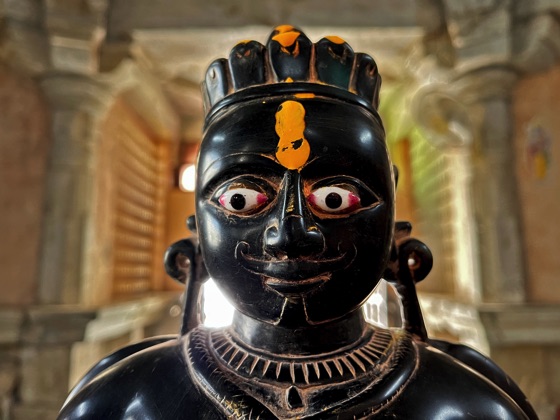
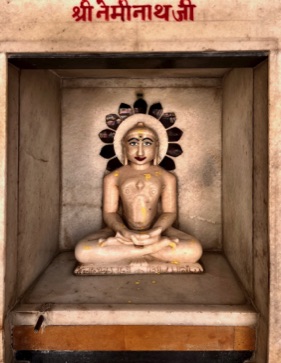
An elderly Italian man does not understand that he is allowed to photograph the marble elephant but not his wife standing next to it.
He angrily holds up his wallet and points to the device: he had to pay extra for it!
Thinking he is trying to bribe him, the guard blows his whistle even louder. He is deeply offended, I gather from his frantic arm gestures.
The grotesque building has countless corridors and alcoves adorned with marble statues.
Temple guards sneak around, suddenly appearing and literally whistling temple visitors back.
The shrill sound echoes in all directions as visitors look around in distress: are they after me?
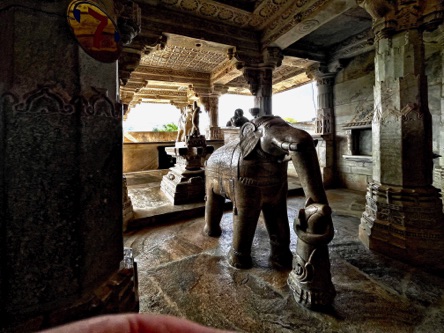
A moment later, the Italian points his camera at one of the naked ‘buddha’ images with wide open eyes. Immediately, countless referee whistles pierce the air of the old stone temple. In turn, the old man throws his arms up in exasperation and strides out of the temple.
Photography does not seem to fit with an open gaze.
We owe credit for the photo below to Ais, who kindly sacrificed his place in Jain heaven.
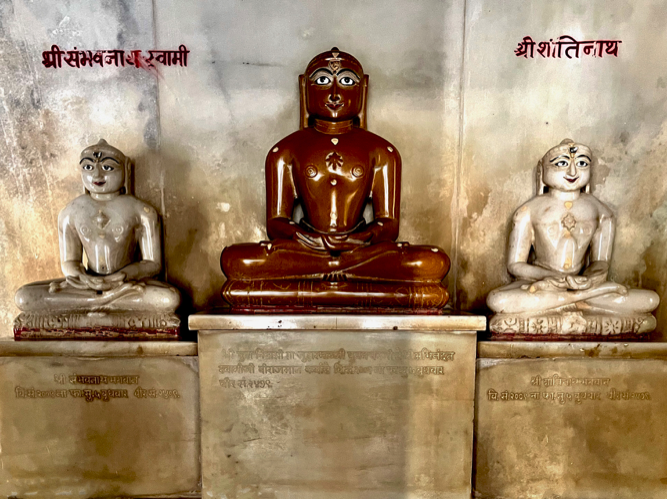
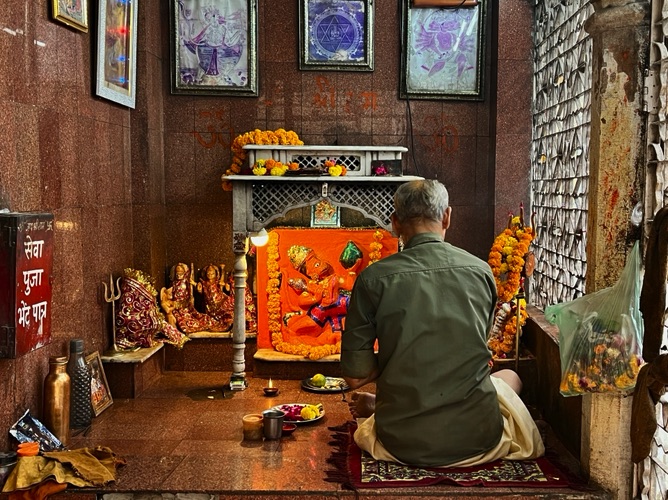
‘All schools of Indian philosophy believe that Atman, the soul, is eternal and imperishable. Explaining the nature of Atman, Krishna says in the Bhagwad Gita, verse 2:25:
"The soul is spoken of as invisible, inconceivable and unchangeable. The soul is neither born, nor does it every die. Nor having once existed, does it ever cease to be. The soul is without birth, eternal, immortal and ageless. It is not destroyed when the body is destroyed "
In some Indian hotels, newspapers are still slipped under the door of every room in the morning. The Times of India has a daily column in which various writers and philosophers discuss religion and culture on the subcontinent.
One morning, I read Ashok Vohra over The Soul:
Jainism is one of the few religions to renounce violence at all times, a practice that has been observed for centuries. Jains will even sweep the path in front of them to avoid killing any insect. They may even wear a cloth over their mouth to prevent any flying insects from finding their death there.
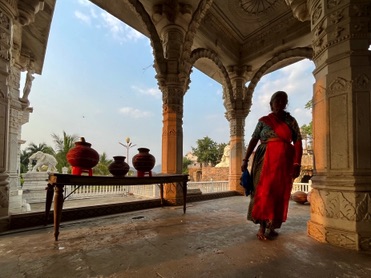
For a long time, the teachings could not be printed due to the microorganisms that would die in the paper of that era.
Gandhi's world-famous ideal of non-violent resistance originated in jainism. Some Indian philosophers at the time criticised the idea, arguing that violence cannot be resolved by opposing it with an ideal. But their argument received little attention… as first the struggle for independence had to be decided.
A few years ago in South India, I saw how a priest first literally drummed up attention and then suddenly pulled the red cloth away from the statue in a quick gesture.
The intention is for the image to strike the temple visitor directly, without the intervention of personal thoughts, prejudices or memories.
Photography is not congruent with this intended purpose either.

Tekst invoeren

Does photography ever steal the soul, at least in Jain's eyes? This idea cannot be any older than photography itself and may very well be a lot younger.
Who knows, perhaps the essayist Susan Sontag was responsible for this in 1973. Just this week, I read an article about this in the Kathmandu Post. Sontag had posited that photographing people is an inherently aggressive act because you turn them into objects enabling you to symbolically possess them. And with this, the young journalist wholeheartedly agreed.
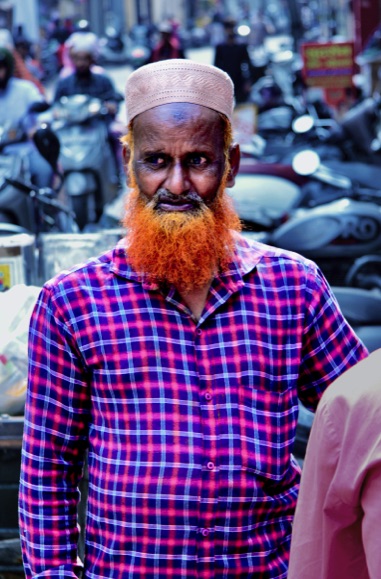
Here in Rajasthan, religious experience seems to be mainly associated with the eyes.
See and be seen.
There are small silversmiths where you can buy sets of three enamel eyes on copper plates.
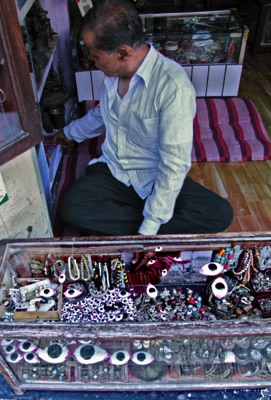

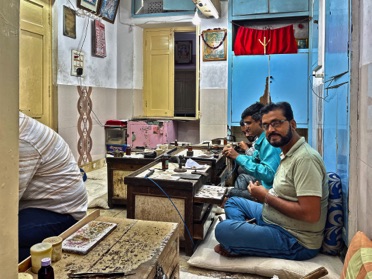
They bring to mind a speech J. Krishnamurti once delivered in Bombay:
‘Install a piece of wood in a special place, bring a fresh flower to it every day and repeat the same words over and over again. Om, Amen, Coca-Cola: it doesn't matter. Keep this up for a month and you will find that the piece of wood has become something special to you.
You have identified with whatever you have projected on it. All gods, including the One, Brahma or God the Father, have been conceived and made into beliefs by humans. They did not make us, we made them. If only it were the other way around, the world would be a better place.’
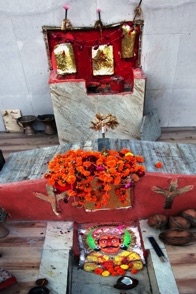
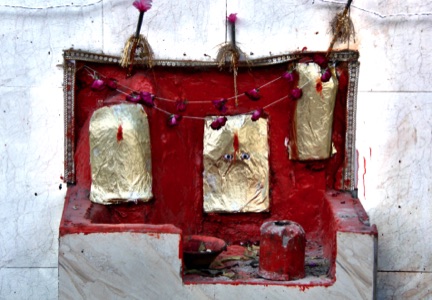
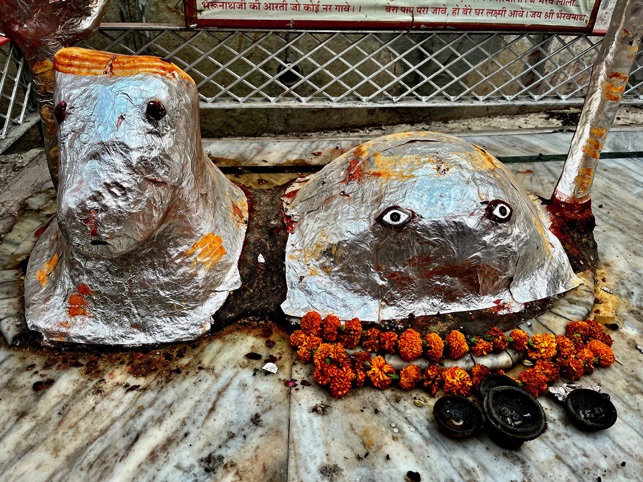
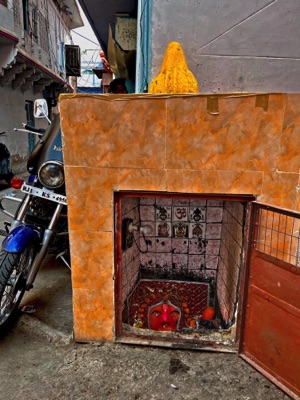

Even so, I find this "folk religion" one of the most enjoyable, colourful and creative spiritual expressions.
Whether the form is covered in silver paper or lavishly painted… with eyes on it... you are seen!
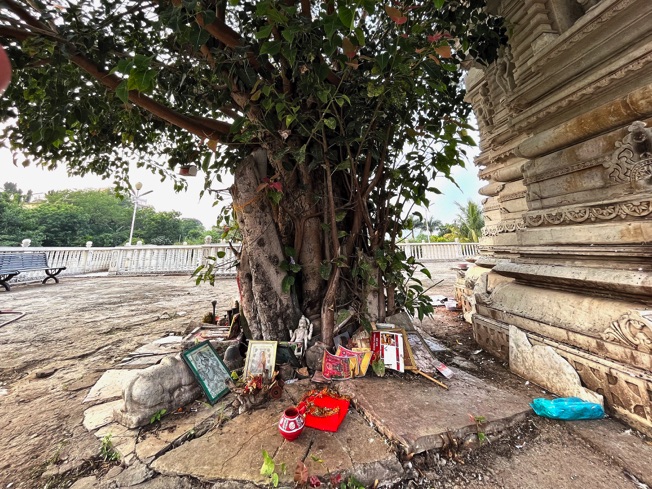
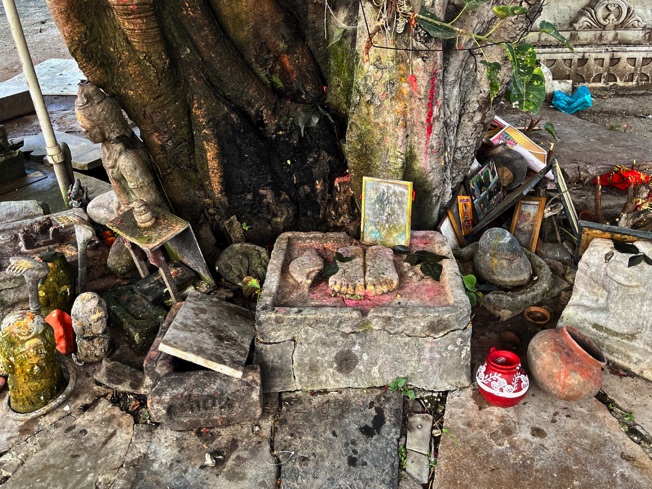

It can also result in some amusing conversations.
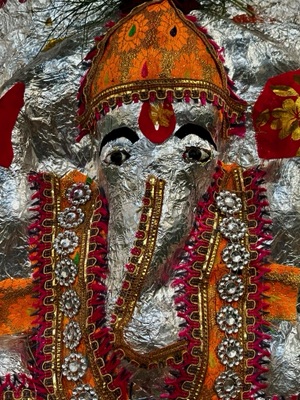
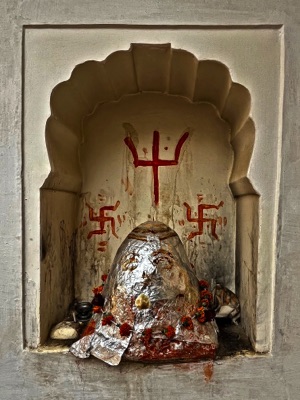
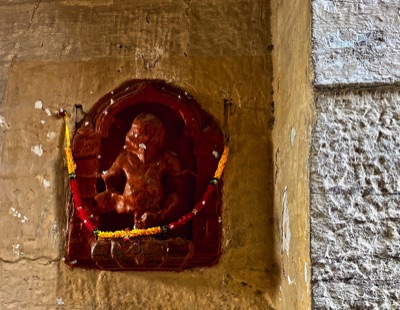
- 'You say this is Ganesh, but how would I recognise him?'
'It's not Ganesh at all,' exclaims a bystander. 'It's Hanuman!'
'No, no, it's definitely Ganesh,' says his wife.
- 'But then I should be able to spot a trunk, shouldn't I?’
'Well, look here. With a little imagination, you can see his belly.'
'That's not necessary!' exclaims an elderly lady. 'The statue is at the entrance to the house, therefore it must be Ganesh.'
- ‘So it's not the statue, but the location, that determines what it is?’ I ask.
‘Yes,’ her husband agrees thoughtfully. ‘My wife is right... as usual.’
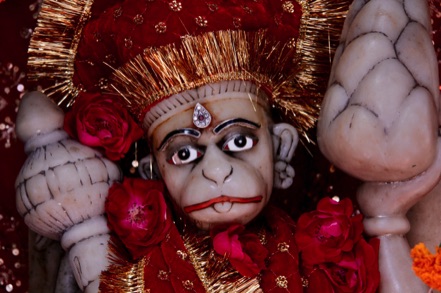
India has a wealth of inspiring religious forms.
To me, they make up one of the most fascinating and colourful charms of the subcontinent.
However, quite a few 'modern' Indians do not see it that way. In the media, they decry the old cultural heritage for its high 'Bollywood content’.
In particular, the Gopuram statues are targeted. Cheerfully coloured, they have sat on temple roofs in the sun for centuries.
But the Indian 2.0 would prefer the government to remove them.
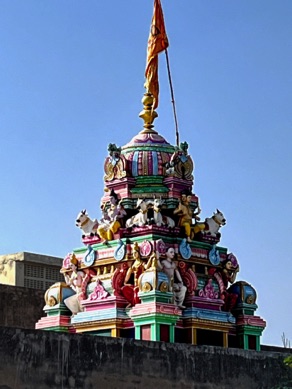
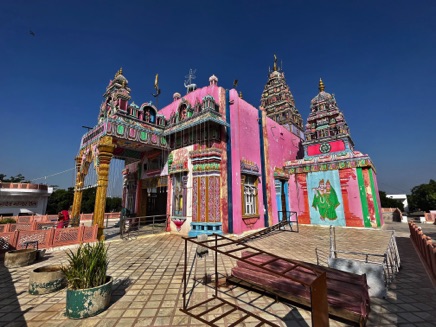
When it comes to Rajasthan, he can relax. The ancient forts and palaces are grand and spacious, while the temples are small and close together.
Here, worldly power has dominated the popular religion of those who did the slave labour to build those forts and palaces for centuries – and still maintain.
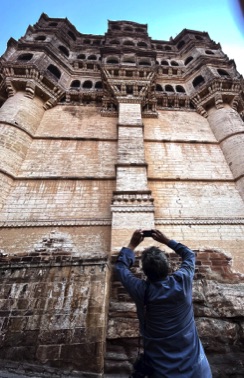
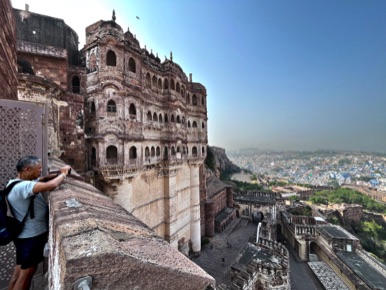

As if the forts and palaces themselves weren't loud and ostentatious...
That is one of the reasons why I tend to prefer old city centres to these soulless forts and palaces.
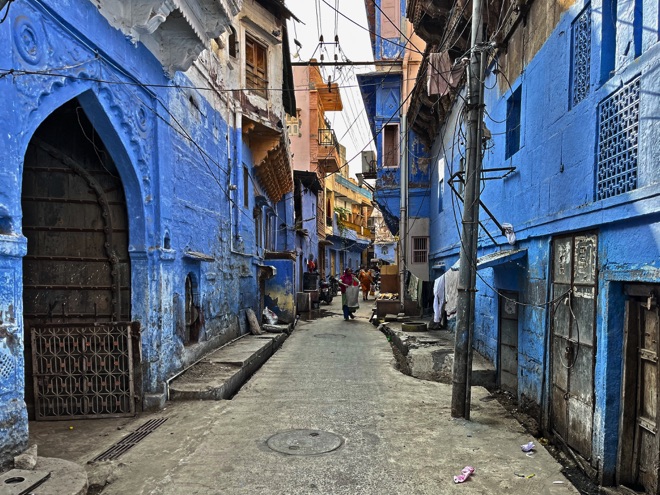
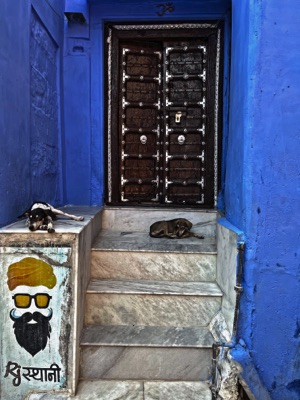
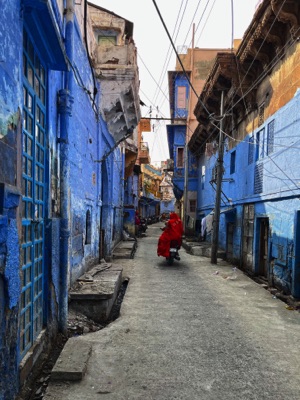
PS
Why all the blue?
It is the colour of Krishna's skin, according to some Rajasthani people.

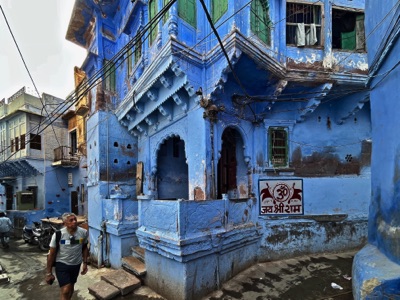
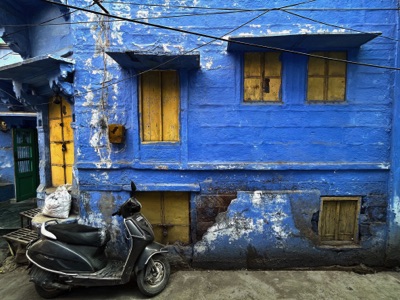
Tekst invoeren
Hold on, weren't farms in Holland sometimes also painted blue to keep the manure flies away?
‘It was discovered in the past that termites were repelled by copper salt compounds. These were added to the lime wash in low concentrations.'
‘Under certain conditions, copper solutions produce blue compounds, which is evident in the materials used for the exteriors of houses in Jodhpur.'
- Internet
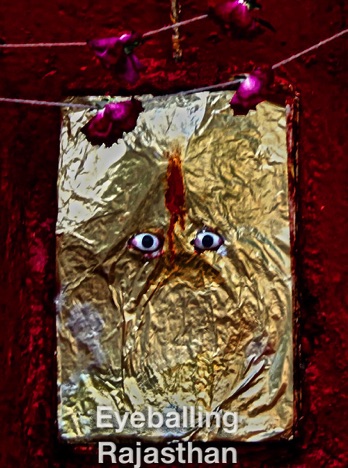
For the sake of a theory, Sontag seemed unwilling to realise that language, writing and images coincide and constitute the tools of communication. Would you have preferred descriptions instead of photos to accompany the text?
Her thesis has not been rendered obsolete by the digital age — the assertion was never true.
As my favourite photographer, Salgado, put it: a photo stands or falls with the intention of its maker.
As with everything, yes.

